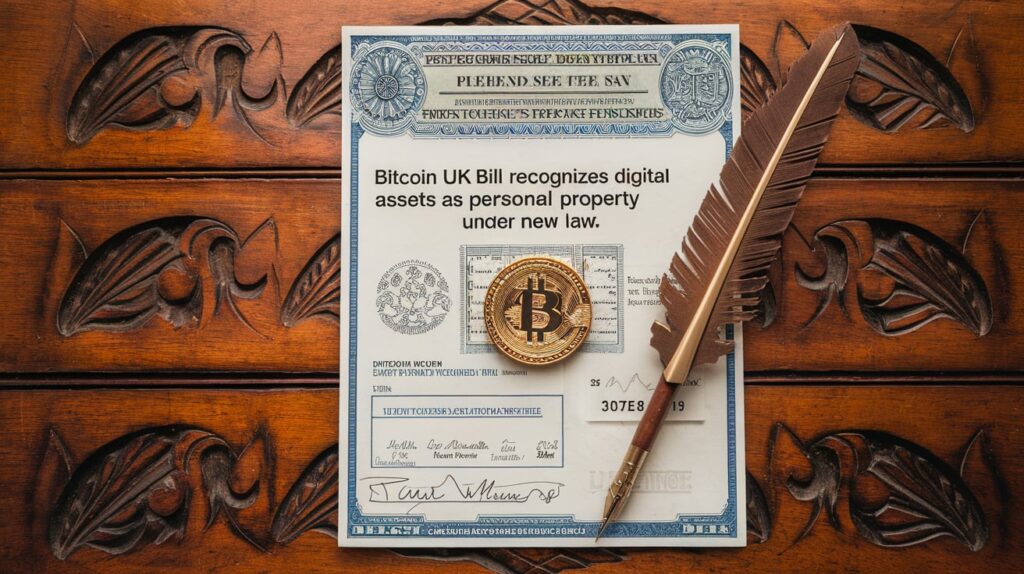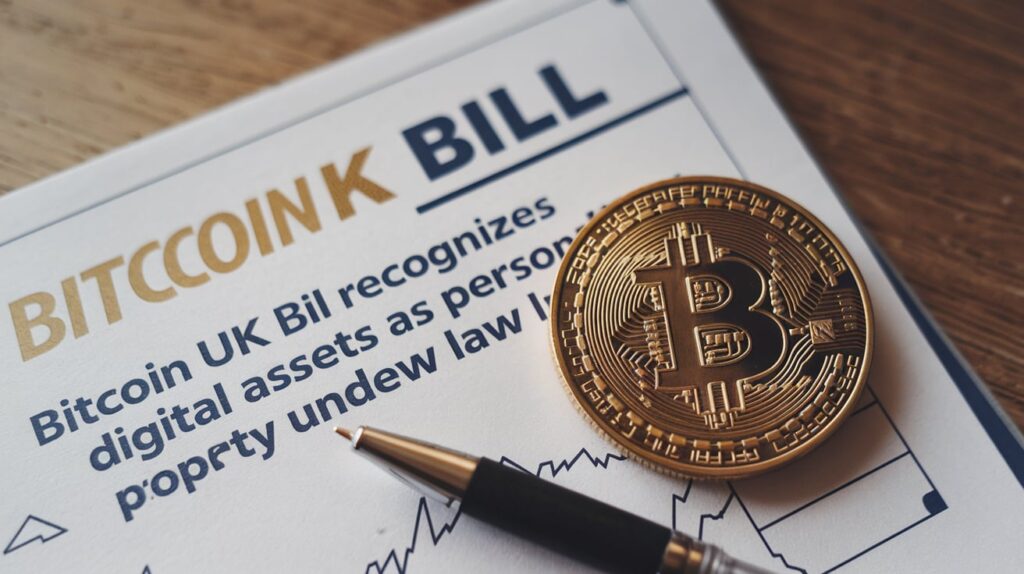
Bitcoin UK Bill Recognizes Digital Assets as Personal Property Under New Law.
In a landmark move, the UK government has passed a groundbreaking bill recognizing digital assets, including Bitcoin, as personal property. This pivotal legislation marks a significant shift in how digital assets are classified and regulated, offering a clearer framework for investors, businesses, and financial institutions. This article delves into the details of the new law, its implications for various stakeholders, and what it means for the future of digital assets in the UK.
Understanding the New Law–
The new UK bill, formally known as the “Digital Assets Personal Property Act 2024,” represents a major legal evolution. Previously, the status of digital assets like Bitcoin was ambiguous, leaving many aspects of ownership and transfer open to interpretation. This new legislation provides a structured approach, defining digital assets as personal property.
1. Legal Definition of Digital Assets
Under the new law, digital assets are classified as personal property, distinct from traditional physical assets such as real estate or tangible goods. This classification ensures that digital assets have the same legal standing as personal property, allowing them to be owned, transferred, and inherited in a manner similar to physical assets.
2. Framework for Ownership and Transfer
The bill establishes clear guidelines for the ownership and transfer of digital assets. It stipulates that ownership is determined by the control of the digital asset’s private keys, aligning with the technological underpinnings of blockchain technology. This clarity simplifies transactions and legal disputes related to digital assets, providing a more predictable and secure environment for both individuals and businesses.
3. Regulatory Oversight and Compliance
The legislation also introduces a regulatory framework to oversee the trading and management of digital assets. Financial institutions and digital asset service providers are now required to adhere to specific compliance measures, including anti-money laundering (AML) and know-your-customer (KYC) regulations. This regulatory oversight aims to enhance the integrity of the digital asset market and protect investors from potential fraud and malpractice.

Implications for Stakeholders
The new law has far-reaching implications for various stakeholders, including investors, businesses, and financial institutions. Here’s a closer look at how each group is affected:
1. Investors
For investors, the bill provides a significant boost in confidence. The clear legal status of digital assets as personal property means that investors have a more reliable framework for asserting their ownership rights. This legal clarity is expected to encourage greater participation in the digital asset market, potentially leading to increased investment and market growth.
2. Businesses
Businesses operating in the digital asset space will benefit from the new law’s structured regulatory environment. The clear guidelines for ownership and transfer will streamline business operations and reduce the legal uncertainties associated with digital assets. Furthermore, businesses will need to implement robust compliance measures to align with the new regulatory requirements, which could involve investing in updated technology and training for staff.
3. Financial Institutions
Financial institutions are likely to experience the most direct impact. The new regulatory framework will require them to adapt their systems and processes to accommodate digital assets. This includes implementing AML and KYC procedures, which will necessitate updates to compliance protocols and possibly new technologies to manage digital asset transactions securely.

Case Studies and Real-World Examples
To illustrate the impact of the new legislation, let’s explore a few hypothetical case studies and real-world examples:
1. Case Study: Digital Asset Transfer
Consider a scenario where an individual wishes to transfer Bitcoin holdings to a family member as part of an inheritance. Under the old system, this process could be fraught with legal ambiguity and potential disputes. With the new law, the transfer is straightforward: the ownership is determined by control of the private keys, and the legal framework supports the recognition of this transfer as valid personal property.
2. Case Study: Business Compliance
A startup focusing on digital asset trading will now need to implement compliance measures in line with the new regulations. This might involve setting up AML and KYC procedures, integrating new technologies for secure transactions, and training employees on the new legal requirements. While this represents an investment in time and resources, it also offers the opportunity to operate within a more structured and secure market environment.
3. Real-World Example: Institutional Adoption
Several financial institutions in the UK have already begun adapting to the new regulatory landscape. Banks are exploring ways to offer digital asset services, such as custodial solutions, while ensuring they meet the stringent compliance requirements. This shift is expected to enhance the mainstream acceptance of digital assets and could pave the way for more innovative financial products.

Frequently Asked Questions (FAQs)
1. What does the new UK bill mean for Bitcoin owners?
The new bill recognizes Bitcoin and other digital assets as personal property, which means that Bitcoin owners have clear legal rights over their assets. This includes the ability to transfer, sell, or inherit Bitcoin with a defined legal framework supporting these actions.
2. How does the new law impact digital asset businesses?
Digital asset businesses will need to comply with new regulatory requirements, including AML and KYC measures. This means updating their compliance protocols and possibly investing in new technologies to ensure secure and lawful operations.
3. What are the compliance requirements for financial institutions?
Financial institutions must implement measures to comply with the new regulations, including anti-money laundering and know-your-customer procedures. This may involve upgrading their systems, processes, and staff training to align with the new legal framework for digital assets.
4. How will the new law affect the adoption of digital assets?
The clarity provided by the new law is likely to enhance investor confidence and facilitate greater participation in the digital asset market. It also supports institutional adoption by providing a structured regulatory environment, potentially leading to increased innovation and market growth.
5. Are there any risks associated with the new legislation?
While the new legislation provides clarity and a structured framework, there may still be risks related to compliance and implementation. Businesses and financial institutions will need to carefully manage their adaptation to the new requirements to avoid potential legal or operational challenges.
Conclusion
The UK’s new bill recognizing digital assets as personal property represents a significant step forward in the legal and regulatory landscape of digital assets. By providing clear definitions, guidelines, and regulatory oversight, the legislation aims to create a more secure and predictable environment for investors, businesses, and financial institutions. As the market adapts to these changes, the legal clarity and regulatory framework are expected to foster increased participation and innovation in the digital asset space, paving the way for a more robust and integrated financial ecosystem.